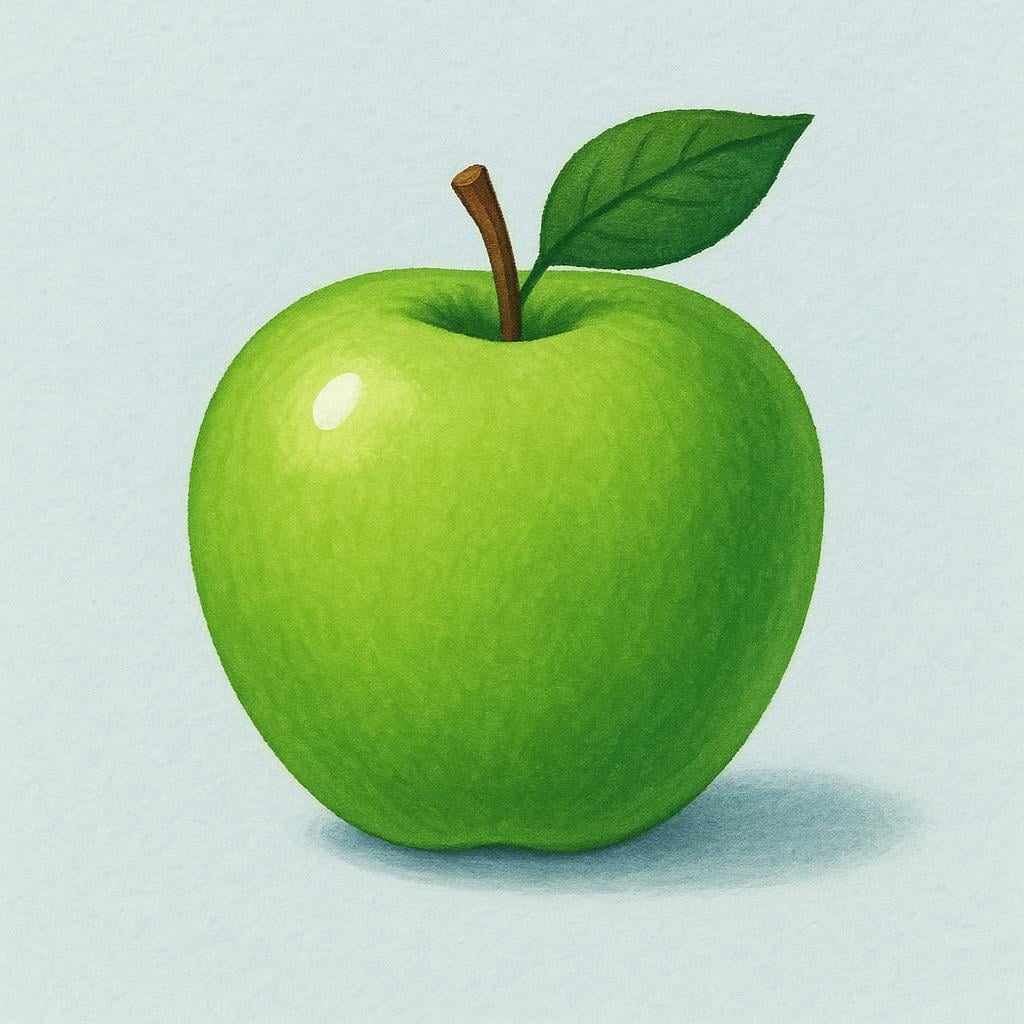verde
/BEHR-deh/
green

When used as an adjective for color, 'verde' means green.
📝 In Action
Mi coche nuevo es de color verde brillante.
A1My new car is a bright green color.
Ella siempre lleva ropa verde.
A1She always wears green clothes.
Necesitamos tomar decisiones más verdes para el planeta.
B1We need to make more green (environmental) decisions for the planet.
💡 Grammar Points
Adjective Agreement
As an adjective, 'verde' must match the noun it describes. Luckily, it only changes form for singular ('verde') and plural ('verdes'), regardless of whether the noun is masculine or feminine.
⭐ Usage Tips
The Go Word
Just like in English, 'dar luz verde' means to give permission or the 'go-ahead' to start a project.

'Verde' describes fruit or vegetables that are unripe and not ready to eat.
verde(Adjective)
unripe
?fruit or vegetable that is not ready to eat
,raw
?food not cooked
young
?describing someone new to a job or inexperienced
📝 In Action
No puedes comer esas fresas; todavía están muy verdes.
B1You can't eat those strawberries; they are still very unripe.
Es un empleado nuevo y todavía está un poco verde en el puesto.
B2He is a new employee and is still a bit green/inexperienced in the position.
⭐ Usage Tips
Figurative Green
This meaning links the color green (like a young plant) to lack of maturity. Use it to describe someone who lacks experience, but usually in a kind way.

'Verde' can be used to describe humor or jokes that are crude or vulgar.
📝 In Action
A mi jefe no le gusta que contemos chistes verdes en la oficina.
B2My boss doesn't like us telling dirty/obscene jokes in the office.
La película tenía diálogos un poco verdes para un público infantil.
C1The movie had slightly crude dialogue for a child audience.
⭐ Usage Tips
Context is Key
This meaning is almost exclusively used with nouns like 'chiste' (joke), 'lenguaje' (language), or 'película' (movie) to describe adult content.

As a noun, 'verde' refers to the color green.
📝 In Action
Me gusta más el verde que el amarillo para pintar la sala.
A2I like green more than yellow for painting the living room.
La ciudad planea crear un nuevo cinturón de verde.
B2The city plans to create a new green belt/area.
💡 Grammar Points
Colors as Nouns
When you use a color word by itself as a noun (meaning 'the color'), it is always treated as masculine, regardless of whether it describes a feminine object later.
❌ Common Pitfalls
Gender Confusion
Mistake: "La verde es mi favorito."
Correction: El verde es mi favorito. (Because the color itself is always masculine when used as a noun.)
✏️ Quick Practice
💡 Quick Quiz: verde
Question 1 of 1
Which sentence uses 'verde' to mean 'lacking experience' rather than the color green?
📚 More Resources
Frequently Asked Questions
How do I know if 'verde' is acting as a color or an adjective meaning 'unripe'?
If 'verde' is describing a fruit, vegetable, or a person new to a role, it likely means 'unripe' or 'inexperienced.' If it's describing clothing, nature, or a generic object, it is almost certainly the color 'green.'
Does 'verde' ever mean 'jealous,' like 'green with envy' in English?
Yes, Spanish has a similar idiom: 'estar verde de envidia' or 'ponerse verde' (to turn green) means to be very jealous. However, when used alone, 'verde' doesn't usually carry the meaning of jealousy unless the context makes it clear.